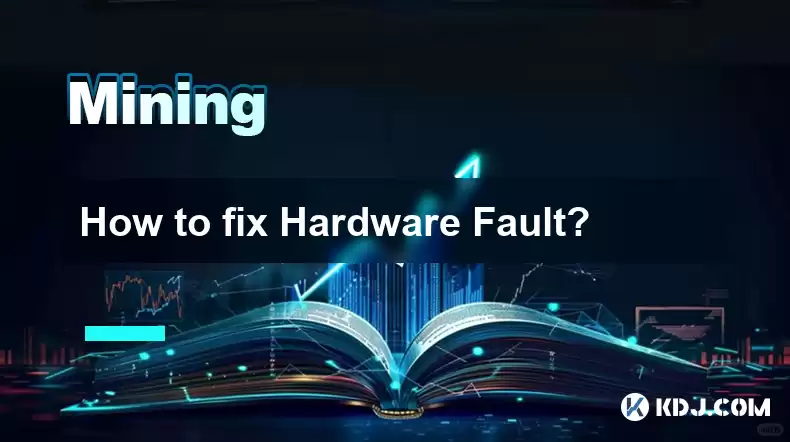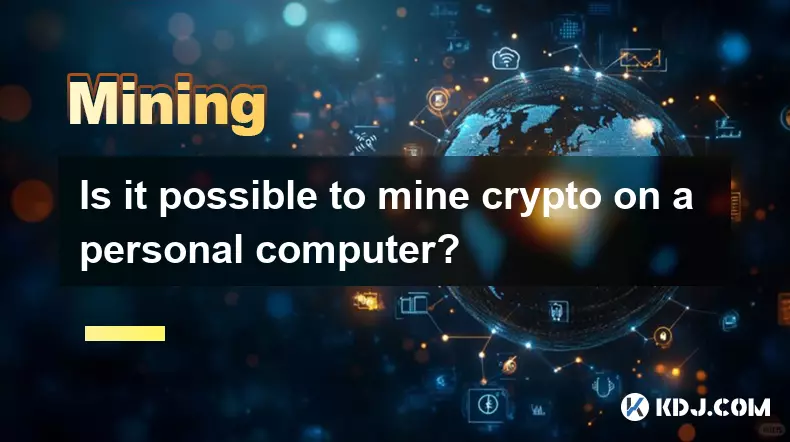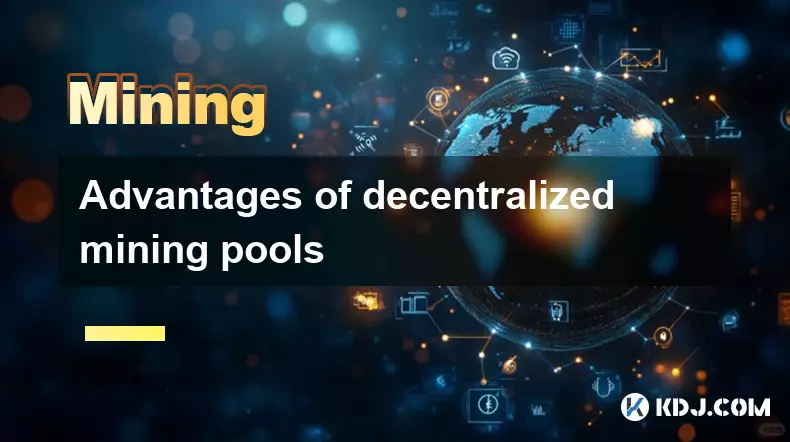-
 bitcoin
bitcoin $108842.957301 USD
-1.88% -
 ethereum
ethereum $3931.777121 USD
-1.66% -
 tether
tether $1.000186 USD
-0.03% -
 bnb
bnb $1153.250882 USD
-2.20% -
 xrp
xrp $2.367904 USD
-1.94% -
 solana
solana $186.182050 USD
-4.20% -
 usd-coin
usd-coin $0.999997 USD
0.00% -
 tron
tron $0.316949 USD
-1.00% -
 dogecoin
dogecoin $0.190780 USD
-3.12% -
 cardano
cardano $0.651324 USD
-2.67% -
 hyperliquid
hyperliquid $37.141055 USD
-0.85% -
 ethena-usde
ethena-usde $0.999224 USD
-0.09% -
 chainlink
chainlink $17.579031 USD
-2.47% -
 bitcoin-cash
bitcoin-cash $509.426284 USD
-2.79% -
 stellar
stellar $0.315298 USD
-2.93%
How to fix Hardware Fault?
Hardware faults in crypto mining, like overheating and power supply failures, can be diagnosed with tools like multimeters and fixed by improving ventilation or replacing parts.
Apr 13, 2025 at 04:57 pm

Understanding Hardware Faults in Cryptocurrency Mining
Hardware faults in the context of cryptocurrency mining can significantly impact the efficiency and profitability of your operations. These faults can range from simple issues like loose connections to more complex problems such as overheating or component failure. Understanding the nature of these faults is crucial for maintaining the health and performance of your mining setup.
Identifying Common Hardware Faults
The first step in addressing hardware faults is to identify them accurately. Common issues include:
- Overheating: This is often indicated by high temperatures on your mining rig's components.
- Power Supply Failures: Symptoms include sudden shutdowns or inconsistent power delivery.
- GPU or ASIC Failures: These can manifest as reduced hash rates or complete cessation of mining activity.
- Loose Connections: These can cause intermittent issues and are often overlooked.
By recognizing these signs early, you can take proactive steps to mitigate their impact on your mining operations.
Tools and Equipment Needed for Diagnosis
To effectively diagnose and fix hardware faults, you will need a set of tools and equipment. These include:
- Multimeter: Essential for checking voltage and continuity.
- Thermal Camera: Useful for identifying overheating issues.
- Screwdrivers and Pliers: For opening cases and tightening connections.
- Compressed Air: To clean dust from components.
- Thermal Paste: For reapplying to CPUs and GPUs if necessary.
Having these tools at your disposal will make the troubleshooting process more efficient and effective.
Step-by-Step Guide to Diagnosing Hardware Faults
Diagnosing hardware faults involves a systematic approach. Here’s how you can do it:
- Check for Overheating: Use a thermal camera to scan your mining rig. Look for hotspots on GPUs, CPUs, and other components. If you find any, ensure proper ventilation and consider cleaning the components with compressed air.
- Inspect Power Supply: Use a multimeter to check the voltage output of your power supply. Ensure it matches the manufacturer's specifications. If it doesn't, consider replacing the power supply.
- Examine GPUs and ASICs: Monitor the hash rate of your GPUs or ASICs. A significant drop in performance could indicate a hardware fault. Use diagnostic software to check for errors.
- Check Connections: Ensure all cables and connectors are securely fastened. Loose connections can cause intermittent issues, so tighten any that are loose.
By following these steps, you can pinpoint the source of the hardware fault and take appropriate action.
Fixing Common Hardware Faults
Once you have identified the hardware fault, the next step is to fix it. Here are some solutions for common issues:
- Overheating: Improve airflow around your mining rig. Consider adding more fans or using a better cooling solution. Clean dust from components regularly to prevent blockages.
- Power Supply Failures: If your power supply is faulty, replace it with a new one that meets the power requirements of your mining rig. Ensure it is from a reputable manufacturer.
- GPU or ASIC Failures: If a GPU or ASIC is failing, consider replacing it. If it's under warranty, contact the manufacturer for a replacement. For GPUs, you might also try reapplying thermal paste to improve cooling.
- Loose Connections: Tighten all connections and ensure they are secure. Use cable ties to manage cables and prevent them from becoming loose over time.
By addressing these issues promptly, you can restore your mining rig to optimal performance.
Preventing Future Hardware Faults
Prevention is better than cure, especially when it comes to hardware faults in cryptocurrency mining. Here are some strategies to prevent future issues:
- Regular Maintenance: Clean your mining rig regularly to prevent dust buildup, which can cause overheating.
- Monitor Temperatures: Use software to keep an eye on the temperatures of your components. Set up alerts for when temperatures exceed safe levels.
- Quality Components: Invest in high-quality components that are less likely to fail. Choose reputable brands for your GPUs, ASICs, and power supplies.
- Proper Ventilation: Ensure your mining rig is in a well-ventilated area. Consider using a dedicated mining room with proper cooling systems.
By implementing these preventive measures, you can reduce the likelihood of hardware faults and maintain the efficiency of your mining operations.
Frequently Asked Questions
Q: Can software issues mimic hardware faults in cryptocurrency mining?A: Yes, software issues can sometimes present symptoms similar to hardware faults. For example, a corrupted driver might cause a GPU to underperform, which could be mistaken for a hardware issue. It's important to rule out software problems before concluding that a hardware fault is the cause.
Q: How often should I perform maintenance on my mining rig to prevent hardware faults?A: It's recommended to perform maintenance on your mining rig at least once every three months. This includes cleaning dust from components, checking connections, and monitoring temperatures. More frequent maintenance may be necessary in dusty environments or if you notice performance issues.
Q: Are there any warning signs that a hardware fault is imminent?A: Yes, there are several warning signs that a hardware fault might be imminent. These include increased noise from fans, sudden drops in hash rate, frequent system crashes, and visible signs of wear or damage on components. Monitoring these signs can help you address issues before they become critical.
Q: Can overclocking contribute to hardware faults in cryptocurrency mining?A: Yes, overclocking can increase the risk of hardware faults, particularly overheating and component failure. While overclocking can boost performance, it also puts additional strain on your hardware. It's important to monitor temperatures and performance closely if you choose to overclock your mining rig.
Disclaimer:info@kdj.com
The information provided is not trading advice. kdj.com does not assume any responsibility for any investments made based on the information provided in this article. Cryptocurrencies are highly volatile and it is highly recommended that you invest with caution after thorough research!
If you believe that the content used on this website infringes your copyright, please contact us immediately (info@kdj.com) and we will delete it promptly.
- Crypto Coins with 100x Potential: Is Blazpay Presale the Real Deal?
- 2025-10-17 12:25:13
- Strike Gold in the Digital Age: Exploring Global Gold and the On-Chain Gold Ecosystem
- 2025-10-17 12:25:13
- US Government, Bitcoin Seizure, and the Chen Zhi Scam: A NYC Perspective
- 2025-10-17 12:45:17
- MAS, Tokenised Liabilities, and Stablecoins: A Singaporean Symphony
- 2025-10-17 12:30:08
- Solana, Dogecoin, and the Crypto Dip: Bargain Hunting or Dodging Bullets?
- 2025-10-17 10:45:16
- Gold, Bitcoin, and Investment: Navigating the Digital Frontier in Style
- 2025-10-17 10:25:15
Related knowledge

Is it possible to mine crypto on a personal computer?
Oct 14,2025 at 08:18pm
Can You Mine Cryptocurrency Using a Personal Computer?1. Yes, it is technically possible to mine cryptocurrency on a personal computer. Early in the h...

The difference between staking and mining
Sep 24,2025 at 05:18am
Understanding Staking in the Cryptocurrency Ecosystem1. Staking involves holding funds in a cryptocurrency wallet to support the operations of a block...

How to participate in testnet mining?
Sep 22,2025 at 09:18am
Understanding Testnet Mining in the Crypto Ecosystem1. Testnet mining is a method used by blockchain developers to simulate real-world conditions on a...

How to dispose of abandoned mining machines?
Sep 19,2025 at 08:19pm
Assessing the Condition of Abandoned Mining Rigs1. Begin by inspecting each mining machine for visible damage, corrosion, or missing components. Machi...

How to identify high-quality mining pools?
Sep 21,2025 at 03:19pm
Reputation and Track Record1. A mining pool’s reputation is built over time through consistent performance and transparency. Pools that have operated ...

Advantages of decentralized mining pools
Sep 20,2025 at 04:36pm
Enhanced Security and Resistance to Censorship1. Decentralized mining pools operate on blockchain-based smart contracts, eliminating the need for a ce...

Is it possible to mine crypto on a personal computer?
Oct 14,2025 at 08:18pm
Can You Mine Cryptocurrency Using a Personal Computer?1. Yes, it is technically possible to mine cryptocurrency on a personal computer. Early in the h...

The difference between staking and mining
Sep 24,2025 at 05:18am
Understanding Staking in the Cryptocurrency Ecosystem1. Staking involves holding funds in a cryptocurrency wallet to support the operations of a block...

How to participate in testnet mining?
Sep 22,2025 at 09:18am
Understanding Testnet Mining in the Crypto Ecosystem1. Testnet mining is a method used by blockchain developers to simulate real-world conditions on a...

How to dispose of abandoned mining machines?
Sep 19,2025 at 08:19pm
Assessing the Condition of Abandoned Mining Rigs1. Begin by inspecting each mining machine for visible damage, corrosion, or missing components. Machi...

How to identify high-quality mining pools?
Sep 21,2025 at 03:19pm
Reputation and Track Record1. A mining pool’s reputation is built over time through consistent performance and transparency. Pools that have operated ...

Advantages of decentralized mining pools
Sep 20,2025 at 04:36pm
Enhanced Security and Resistance to Censorship1. Decentralized mining pools operate on blockchain-based smart contracts, eliminating the need for a ce...
See all articles










































































